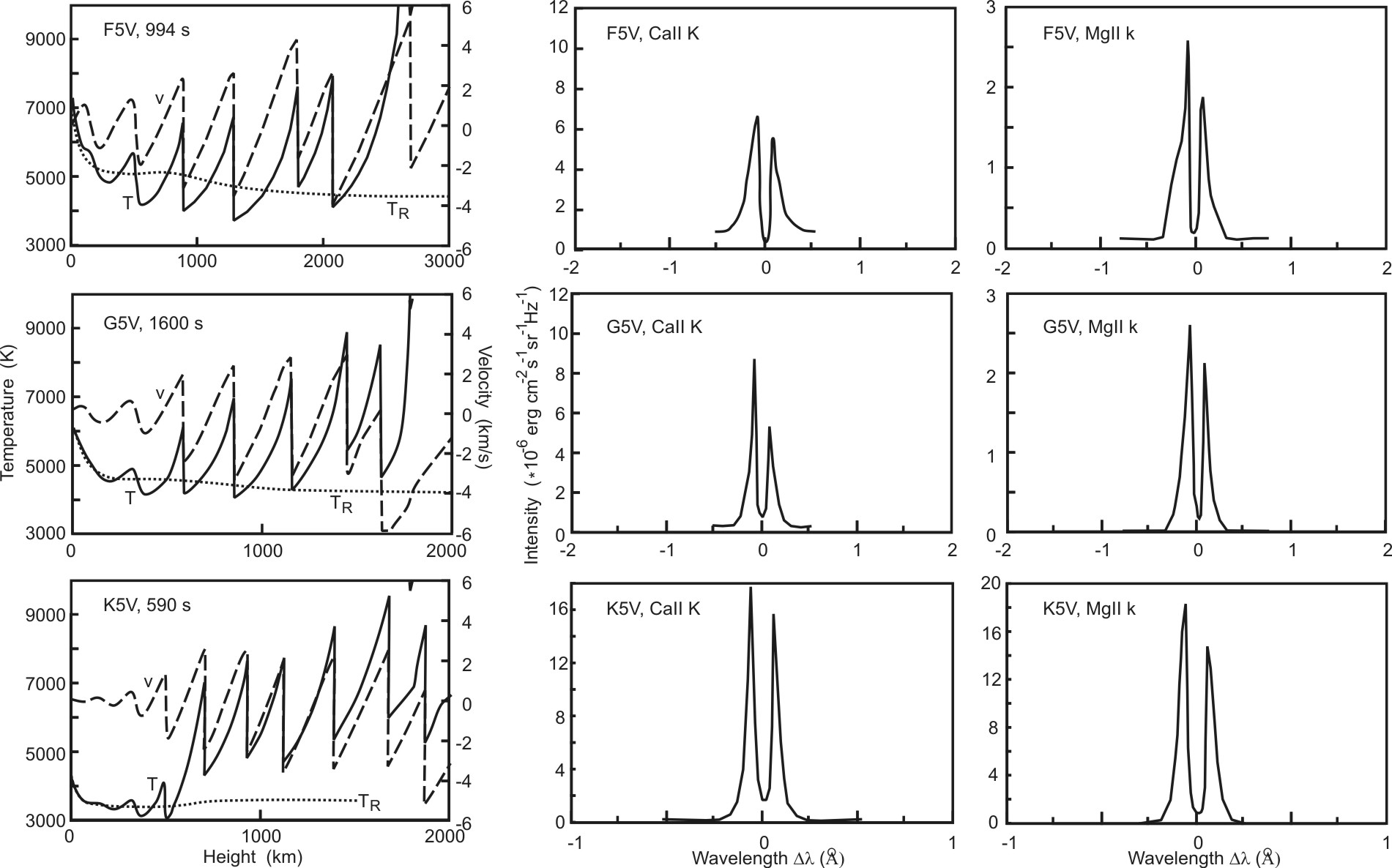
Generated in the top parts of the stellar convection zones acoustic waves propagate in all directions. Those waves that propagate upwards to the stellar surface and into the photosphere encounter the rapidly decreasing density of the outer layers of the stars. Like water waves on the sea shore the acoustic wave amplitudes in this case grow rapidly (due to the conservation of the acoustic flux) which leads to the formation of shocks. Shocks are a very efficient way to dissipate the acoustic wave energy. Since chromospheres owe their existence to heating we suggest that acoustic wave heating is responsible for the generation of chromospheres.
The problem is how to do a realistic simulation of the acoustic wave propagation and shock formation. The waves are a spherical phenomenon and the density decreases only in vertical direction. In addition, an entire spectrum of acoustic waves is generated and individual wave frequencies behave differently in the shock formation process. Moreover, one has complicated effects of departures from thermodynamic equilibrium (NLTE) for the gas and time-dependent effects in the ionization of hydrogen and metals. In the outer stellar atmosphere these effects are of prime importance because near the stellar surface the radiation is very unisotropic, coming only from the direction of the star and because these layers have low density. With vastly increased future computer power fully realistic simulations of the wave propagation of an acoustic spectrum under such conditions emanating from many sources on the star will be no problem. However, at the present time only a highly simplified wave calculation is possible.
For this reason we use a one-dimensional (1D) time-dependent radiation-hydro-dynamic code that treats the acoustic waves as plane waves which propagate only in the vertical direction. With such a code it is possible to follow the propagating acoustic wave into the chromosphere where shock formation and shock dissipation take place. The acoustic waves are introduced at the bottom of an initial stellar atmosphere model by specifying the velocity at a piston. Since an acoustic spectrum would lead to frequent shock mergings which generates large unobserved shocks which is an artifact of the plane-parallel wave treatment (Ulmschneider et al. 2005) we represent the acoustic wave spectrum by a monochromatic wave with a suitably chosen wave period P that represents the peak of the acoustic spectrum. For P we choose Papprox P_A/5 to P_A/10 where P_A is the acoustic cut-off period and the amplitude of the velocity fluctuation at the piston is determined from the acoustic flux F_A. The initial atmosphere model was chosen to be in radiative equilibrium because the atmosphere should not show motion before the waves are introduced.
Figure 2 shows such wave computations and chromosphere models for three main sequence stars (of spectral class F5V, G5V, K5V), after Buchholz & Ulmschneider (1994). On basis of these models the emerging Ca II and Mg II resonance line fluxes were computed allowing for partial frequency redistribution (PRD) (Ulmschneider 1994). By integrating these line core emission fluxes over frequency (the other parts of the lines were not simulated), total line fluxes (Ca II H+K, Mg II h+k) were computed and compared with observations. In the left panels it is seen that during propagation through the photospheric layers the waves grow in amplitude and form shocks which give rise to intense mechanical heating. This raises the mean temperatures and generates the chromospheres.

Fig. 2 Chromosphere models with monochromatic acoustic waves showing temperature T and velocity V fluctuations and the development of shocks (left panels). The middle panels show the corresponding Ca II K line profiles and the right panels the Mg II k profiles, after Buchholz & Ulmschneider (1994)


